|
|
|
ADVERTISEMENTS
|
|
PREMIUM
- HAPPY HOLIDAYS!
- Siliconeer Mobile App - Download Now
- Siliconeer - Multimedia Magazine - email-Subscription
- Avex Funding: Home Loans
- Comcast Xfinity Triple Play Voice - Internet - TV
- AKSHAY PATRA - Bay Area Event - Sat. Dec 6
- Calcoast Mortgage - Home Loans
- New Homes in Silicon Valley: City Ventures - Loden Place - Morgan Hill
- Bombay to Goa Restaurant, Sunnyvale
- Buying, Sellling Real Estate in Fremont, SF Bay Area, CA - Happy Living 4U - Realtor Ashok K. Gupta & Vijay Shah
- Sunnyvale Hindu Temple: December Events
- ARYA Global Cuisine, Cupertino - New Year's Eve Party - Belly Dancing and more
- Bhindi Jewellers - ROLEX
- Dadi Pariwar USA Foundation - Chappan Bhog - Sunnyvale Temple - Nov 16, 2014 - 1 PM
- India Chaat Cuisine, Sunnyvale
- Matrix Insurance Agency: Obamacare - New Healthcare Insurance Policies, Visitors Insurance and more
- New India Bazar: Groceries: Special Sale
- The Chugh Firm - Attorneys and CPAs
- California Temple Schedules
- Christ Church of India - Mela - Bharath to the Bay
- Taste of India - Fremont
- MILAN Indian Cuisine & Milan Sweet Center, Milpitas
- Shiva's Restaurant, Mountain View
- Indian Holiday Options: Vacation in India
- Sakoon Restaurant, Mountain View
- Bombay Garden Restaurants, SF Bay Area
- Law Offices of Mahesh Bajoria - Labor Law
- Sri Venkatesh Bhavan - Pleasanton - South Indian Food
- Alam Accountancy Corporation - Business & Tax Services
- Chaat Paradise, Mountain View & Fremont
- Chaat House, Fremont & Sunnyvale
- Balaji Temple - December Events
- God's Love
- Kids Castle, Newark Fremont: NEW COUPONS
- Pani Puri Company, Santa Clara
- Pandit Parashar (Astrologer)
- Acharya Krishna Kumar Pandey
- Astrologer Mahendra Swamy
- Raj Palace, San Jose: Six Dollars - 10 Samosas
CLASSIFIEDS
MULTIMEDIA VIDEO
|
|
|
|
|
COVER STORY:
Changing the World: Bilaal’s Voyage
Too many people think they can’t make a difference. But it just isn’t true, writes Bilaal Rajan, 12, who to date has raised over $5,000,000 for to support the less privileged, and has just finished a weeklong “barefoot campaign” to raise awareness about poor kids.
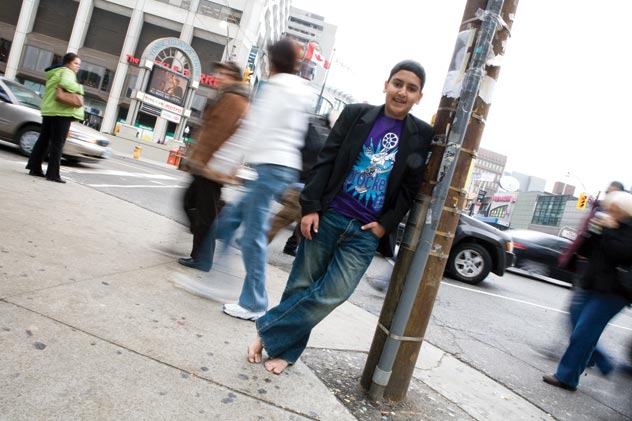
(Above): Bilaal Rajan, 12, walks barefoot on the streets of Toronto, to raise awareness of the plight of underprivileged children in the world.
How it All Began
I was only four years old when it all started in 2001. A devastating earthquake had ravaged the province of Gujarat in India. My parents were reading a newspaper story about the event and told me about a priest from our very own religious community who, tragically enough, had died in the rubble. I immediately thought of how different — and how much more difficult — my life would be without parents.
I happened to be eating a clementine orange at that time, and I humbly suggested I could help out by raising funds by selling them door-to-door in my neighborhood. I always had one parent or grandparent with me. Some people said “no,” but others said “yes,” and I managed to raise $350, which seemed like a fortune.
Selling oranges and donating the money felt really good. I liked knowing that I helped someone and it inspired me to do more, so I did.
The World Partnership Walk takes place every year on the last Sunday in May and is managed by the Aga Khan Development Network (www.akdn.org). The goal is to raise awareness and getting people involved in ending global poverty. Since my parents have always participated, I decided that I wanted to be part of it as well. By calling and emailing everyone I knew and encouraging them to contribute, I have consistently fundraised more than $1,000 every year for over a decade, totaling about $50,000.
Although the Gujurat initiative happened over eight years ago, I still enjoy finding new and creative ways to give back to those in need. In fact, by focusing on others, incredible opportunities have presented themselves in ways I couldn’t have imagined. My parents were also a big source of inspiration to me because they always led by example. They have been a major influence since they were continually giving to others and helping people in need. I could see directly how lives could be changed by caring for others.
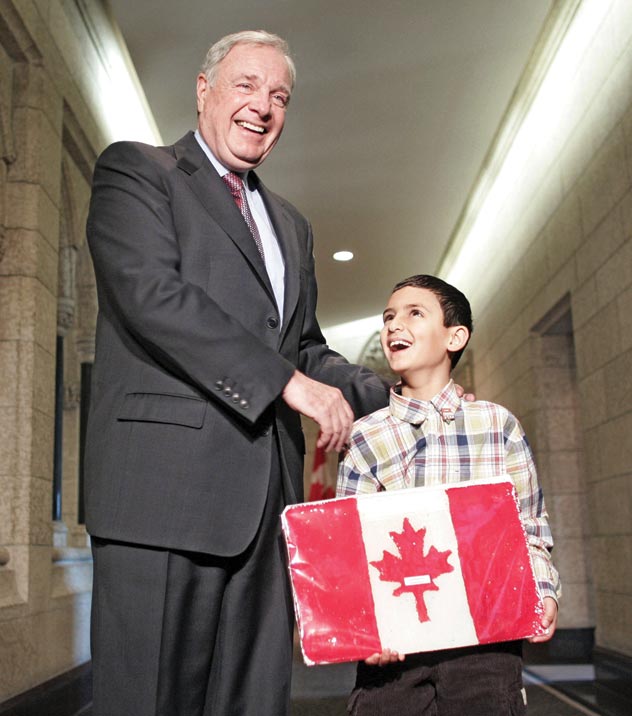
(Above): Bilaal Rajan, with former Canadian Prime Minister Paul Martin.
Raising Funds
Between the ages of four and eight, I continued to raise funds in small ways for the World Partnership Walk, the MS Read-a-Thon, the Jump Rope for Heart, and many other worthy causes. When I was eight years old, I read a UNICEF (United Nations Children’s Fund) plea in the newspaper about a girl crying because of the terrible hurricanes in Haiti. I felt compelled to help once again, but this time in a much larger way. I was so moved by the plea that I immediately went to my parents and asked them what I could do to help children who were suffering from HIV/AIDS in developing countries. They suggested that I donate my allowance, which at that time was $10 a month. I responded that it wasn’t enough, and that I could give more.
Since my father’s business sold really good cookies in boxes by the dozen, I asked him if he would donate some to help me raise money for the Haiti hurricane victims. Since I was only eight years old at the time, my father thought I probably wouldn’t sell too many, so he gave me about 25 boxes to start with. I got twelve of my school friends together and over Thanksgiving weekend, we sold more than 1,000 boxes of cookies to raise over $6,500. The money we raised went toward building a school in Haiti.
Raising that much made me realize that helping in a small way could lead to much bigger things. I realized that I could do more than make a difference in someone’s life. I could perhaps save a life as well. And that understanding made me want to keep doing more to help others.
As the holiday season was approaching, I started making decorative acrylic plates from a science project as Christmas gifts for my teachers at school. Based on the positive response, I could sell some of these to raise money for UNICEF. The funds could be used to help children in developing nations living with HIV/AIDS and those who have lost either one or both parents to the disease.
In the beginning, I approached shopping malls, but they said I needed a selling permit and insurance. I knew I didn’t have time for that, so I decided to pack up all the plates I had made and go to the place I had found success selling cookies: Union Station, the grand central transit station in the heart of downtown Toronto, Canada. It happened to be one of the coldest days of the year, with temperatures reaching -14 degrees Celsius. It was so cold that a couple of my plates had cracked. I had limited success but refused to give up.
I then called a family friend who owned a coffee shop nearby and asked if I could sell the plates in his store. He happily agreed and within nine hours of approaching just about everyone who came into the store pitching in, I raised $1,200 for the cause.
Even to this day, that UNICEF plea from the crying girl in the newspaper story has stuck with me and kept me motivated to do more and more. It always makes me ask myself why every child throughout the world couldn’t have the things we have here and take for granted. It’s easy to assume that other people around the globe have the same resources and opportunities that we do, but it’s just not true. In fact, the World Bank states that over 2.8 billion people live on less than two dollars a day. When I learned about this, I had a hard time believing it. I began looking at my life much differently and realized to never take what I have for granted.
I was passionate about telling other young people about what I had learned and how they could make a real difference in the world, and I thought about speaking publicly at schools. At that moment in late 2004, a devastating tsunami struck in south-east Asia. I immediately contacted UNICEF to see if I could send out an appeal across Canada to every young person to raise $100 and help the Tsunami victims. The goal I suggested involved raising a million dollars nationwide. Since I was only eight years old at the time and proposing such a big idea, UNICEF was skeptical at first. But with persistence, they could tell I was serious and very committed, so they went with the idea. I was excited to see many school boards across Canada joining in, as well as various individuals and corporations. By the end of the campaign, we had raised about $5 million, which included the Government of Canada matching our funds dollar per dollar.
After this initiative, I visited the areas in south-east Asia where the tsunami struck so I could see first-hand how the $5 million raised by Canadian children was making a difference. I later reported back to them on what I witnessed. In the countries that were hit hardest, I saw that our efforts were making a huge impact, but I also realized that a lot more needed to be done around the world. So upon my return to Canada, I talked to everyone and anyone who would listen: radio, print, and TV media, corporations, school children and community organizations.
Although I have continued fundraising for various causes, I have also began speaking more often at various schools, teachers’ conferences, business functions, fundraisers throughout Canada, and various events in the United States as well. It has been a lot of fun working with so many different people. The more charity work I do, the more speaking opportunities come my way.
In the summer of 2007, I volunteered in Tanzania to help educate and bring awareness of HIV/AIDS prevention to the rural communities of Arusha, a town at the base of Mount Kilimanjaro.
In addition, I began teaching school children there about my eight principles for maximizing their true potential, based on my own experiences, to help them reach higher. Using principles like “Know Your Destination, Think before You Act, Listen Hard and Don’t Hardly Listen,” and five others I’ve used throughout my endeavors, I wanted people to know that they could do anything in life. The greatest feeling about speaking in the workshops was knowing that I was truly living by my motto: “Remember, Together We Can Make A Difference.”
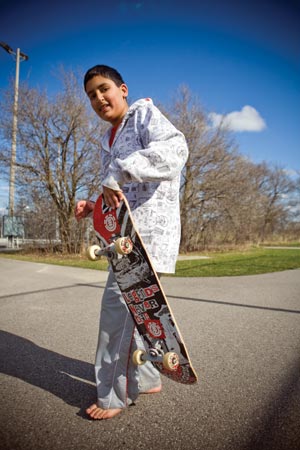 (Right): Having fun on a skateboard becomes a lot more challenging when you’re out there in barefoot. (Right): Having fun on a skateboard becomes a lot more challenging when you’re out there in barefoot.
Writing a Book
In the process of working with different people and different groups, I realized I couldn’t be in enough places to spread my message to the extent I wanted. So I decided that writing a book would help me reach more people around the world. Called “Making Change: Tips From An Underage Overachiever” (ORCA Publishers, 160 pages), it was written especially for young people. I wanted them to learn how possible – and how much fun – it really is to make a difference. In the book, I focus on being creative, thinking big, being bold, and never taking “no” for an answer.
I list more than ninety different ideas, including walkathons, sporting events, raffles, spelling bees, shoveling driveways in winter, selling newsletters, book sales, charity dances and art sales. Some are traditional and fairly straightforward, while others are more unconventional. The book also has a section which contains my eight principles for maximizing your potential.
I had the pleasure of holding the book launch at my school in Aurora, Ontario in front of 300 students, friends, elected officials and invited guests. I also had the opportunity to be interviewed by dozens of newspapers and radio and TV stations all over the world about the book, helping to spread the message of hope and change.
Going Barefoot
More recently, I initiated a special event for National Volunteer Week from April 19 to 25 called the Barefoot Challenge in order to help raise awareness about child poverty in our world. As a UNICEF Canada Children’s Ambassador, I visited countries in South-East Asia and Africa and met with children who walk miles every day barefoot to fetch water, work on their farm lands, go to school, or perform other chores.
So I decided to live life for seven days barefoot myself. As they say, “You never really know someone until you walk a mile in their shoes,” but I took it a step further: I went barefoot!
On April 19, I was featured in a documentary, Yes We Can, produced by In Sync video, that premiered at the Sprockets Film Festival in Toronto, where the challenge officially kicked off.
The response from young people, adults and the media throughout the world was overwhelming, which I am very grateful for. I had dozens of interviews with television networks, radio stations or newspapers from the United States, Britain, Ireland, the Netherlands, Belgium, Sweden, Germany, India, Switzerland, Hong Kong and Singapore.
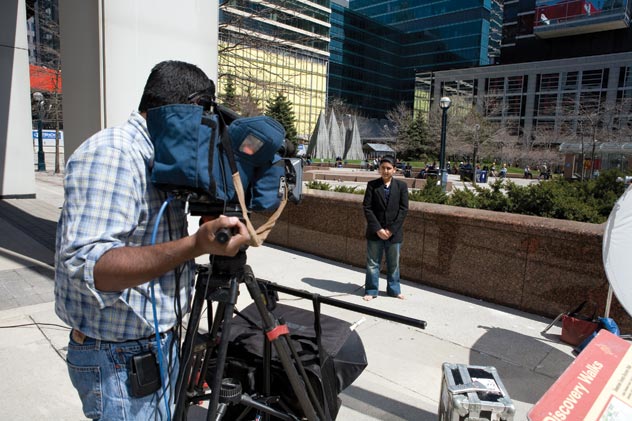
All his fundraising has made Bilaal a bit of a celebrity (Above): Bilaal being filmed by a television crew.
Throughout the week, several unexpected things occurred which really puts things into perspective. About half way through, for example, I got my first blister on the bottom of my foot. It hurt pretty bad, and I can’t imagine what some children in the underdeveloped world must experience. The difference is that in a country like Canada, we have the medicines and disinfectant to heal it and patch it up in no time. Unfortunately, the millions of underprivileged kids around the world don’t have that kind of access to health care.
In addition, I got thrown out of gym class and kicked off my school’s tennis team. Now this was really unexpected. Although I made pre-arrangements with my school administration about going barefoot in class, teachers thought it would be unsafe while playing sports. I played tennis and must admit it isn’t easy chasing down a forehand without shoes on. I immediately thought of the school boys I met in Africa who played soccer barefoot on the hardened, rocky fields of Malawi and Tanzania.
In addition, my school recommended this week that I shouldn’t attend a field trip to St. Lawrence Market. It made me think of how many children throughout the world are excluded from participating in a favorite activity because they are too poor to afford shoes, or any other basic necessity. Yet I decided to continue the barefoot initiative. Everyone faces adversity, but if you believe in something, you have to persevere. We can all learn about the importance of adversity from a very simple African proverb: “Smooth seas do not make skillful sailors.”
Just a month earlier, I couldn’t have imagined what it was like to live life without shoes. I found out quickly enough. I am happy to say that the Barefoot Challenge will be a yearly event, and I know that next year’s will be bigger and better than ever.
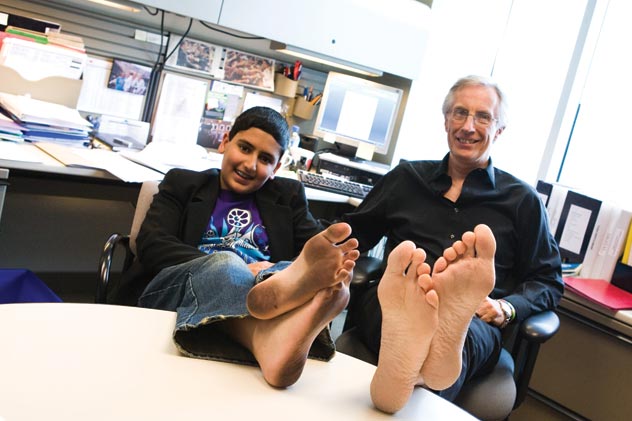
(Above): Bilaal (l) and a not-so-young pal put their feet on the table in solidarity with the ‘barefoot campaign.’
Inspiring Others
I’ve learned that the main reason people don’t do more to help in their community or around the world is simply because they don’t know what is going on outside of their own experience. They don’t realize how many millions of children don’t have the opportunity to go to school, or how so many people must walk for miles just to get clean drinking water, or the number of children who have to stay home to take care of their parents. And even if children in some developing countries can go to school, they have to sit three students to a one-person desk — and that’s if they even have desks.
On my travels, I’ve seen classroom blackboards that are bricks covered with black mud. I’ve seen school classes conducted outside in the rain because schools don’t even have a roof or walls. I’m not saying this to make anyone feel bad, but rather to bring awareness about what is really happening in the world today. I believe that information and knowledge can inspire people to take action and make change, because doing something to help others is where true fulfillment comes from. I live with a philosophy that’s based on an old Chinese proverb:
If you want happiness for an hour, take a nap.
If you want happiness for a day, go fishing.
If you want happiness for a year, inherit a fortune.
If you want happiness for a lifetime, help someone.
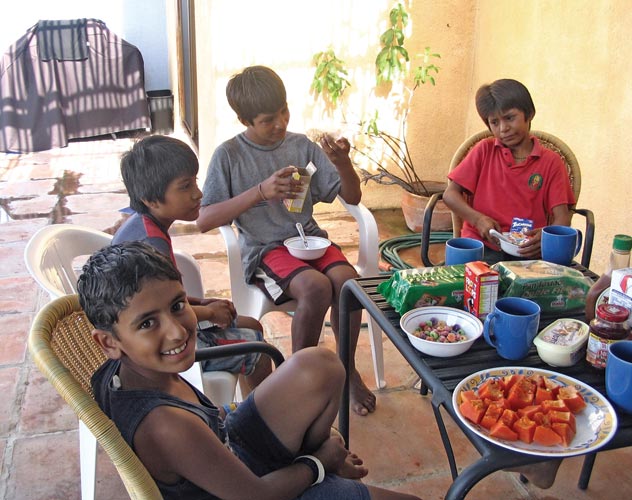
(Above): Bilaal (l) hanging out with some Mexican kids at a fiesta.
This reminds me of the big picture. I realize that instead of buying that latest gadget or fad item, I can take that money and do something to improve the world and the life of someone else. If we all think beyond ourselves and what we want, to reach out to help others, in the end we will also end up helping ourselves. We will always feel better about ourselves when we have done something for someone else.
In the process of achieving your goals, whatever they may be, you may come up against discouragement along the way. I had several instances where people did not believe in me or take me seriously, but getting a lot of “no’s” means that you are reaching a lot of people and are coming closer to a “yes”. Eventually, the yes’s will come.
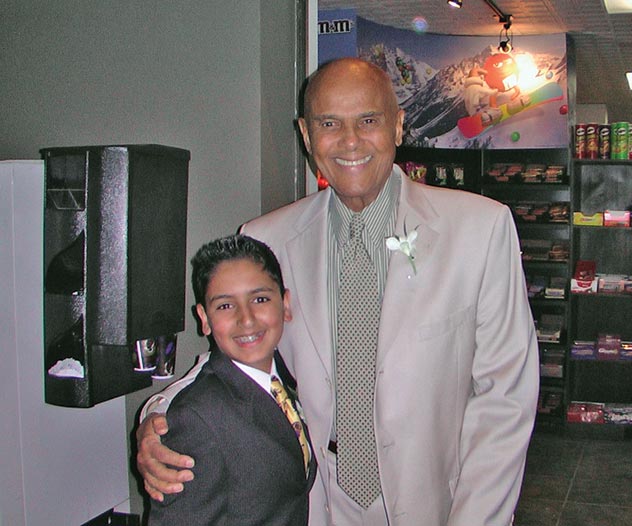
(Above): Bilaal gets a hug from legendary musician and activist Harry Belafonte.
Rejection happens, but you have to keep moving forward until you find the support you need. Facing denial is the first test we’re given to prove to ourselves that we are committed to our goal. We need to have a proactive attitude which assumes that we are the ones who need to take action. We can’t wait for someone else to change our personal situation or our world. If everyone sat back waiting, nothing would get done. As Nolan Bushnell, the inventor of Atari, once said, “Everyone who’s ever taken a shower has an idea. It’s the person who gets out of the shower, dries off and does something about it who makes a difference.”
Too many people think they can’t make a difference. But it just isn’t true. Even helping in a small way, such as donating as little as one dollar, is enough to pay for a vaccination that could save someone’s life. Our contribution to the world does not have to be giant, we just need to do something. I want other young people to know that they can help make a difference. I’m just a normal kid who believed he could make change. And if I can do it, there’s no reason you can’t do something even greater.
Making the world a better place isn’t just a boy’s dream, it is our destiny.
|
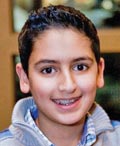 Bilaal Rajan’s fundraising began when he was four, when he sold oranges door-to-door to raise funds for Gujarat earthquake victims in 2001. To date he has raised over $5 million, and traveled and spoken in numerous countries including Canada and the U.S. He is an eighth-grade student and lives in Toronto. Bilaal Rajan’s fundraising began when he was four, when he sold oranges door-to-door to raise funds for Gujarat earthquake victims in 2001. To date he has raised over $5 million, and traveled and spoken in numerous countries including Canada and the U.S. He is an eighth-grade student and lives in Toronto.
|
|
|
|
|
|